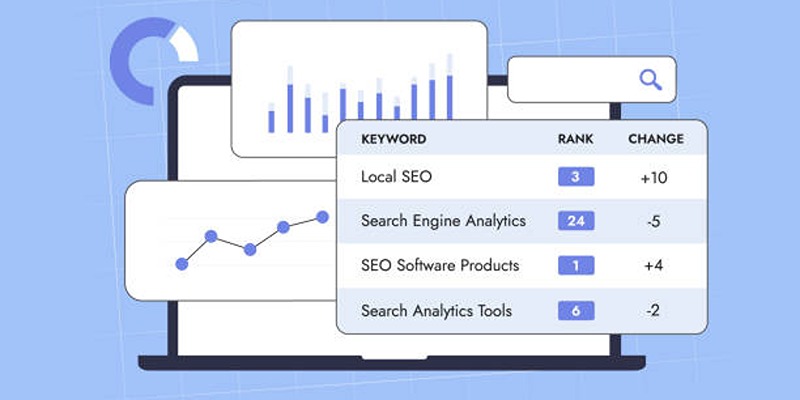March postmarketOS Update Brings GNOME 48 and COSMIC Integration
Advertisement
The March update of postmarketOS, the Alpine Linux-based mobile operating system, introduces a notable set of enhancements that further strengthen its usability, interface flexibility, and device compatibility. Known for its emphasis on sustainability and privacy, postmarketOS continues to expand its footprint in the mobile Linux ecosystem with each release.
This month’s changes bring the integration of GNOME 48, initial support for the COSMIC Desktop, and a substantial expansion in supported devices. These updates position postmarketOS as a maturing, community-led alternative to Android, particularly for users seeking more control over their mobile environments.
GNOME 48 Integration Enhances Mobile Experience

GNOME 48, the latest version of the widely used Linux desktop environment, has now been fully integrated into postmarketOS. Though GNOME has historically targeted desktop users, this release optimizes key aspects for mobile deployment.
Major benefits of GNOME 48 in postmarketOS include:
- Improved visual responsiveness and touch optimization across the GNOME Shell, offering smoother transitions and a modernized Activities overview that adapts more comfortably to small-screen environments.
- Enhanced Wayland performance, resulting in reduced input latency and better gesture support, which is essential for mobile touch interfaces running on minimal hardware.
- Redesigned UI components, such as larger icons and refined spacing, which improve tap accuracy and general usability for users navigating entirely by touch.
- Increased power efficiency and resource handling, enabling the shell to run on lower-end devices with improved memory performance and reduced CPU throttling during extended sessions.
These refinements make GNOME 48 one of the most polished full-featured desktop environments currently available for postmarketOS.
COSMIC Desktop Integration Introduces a New Modular UI Option
Another key advancement in the March update is the experimental integration of the COSMIC Desktop, developed by System76. Known for its modularity and built-in support for keyboard and tiling workflows, COSMIC is now being explored within the mobile context of postmarketOS.
Noteworthy characteristics of COSMIC integration in this release:
- The introduction of a touch-adapted tiling window system allows users to manage applications in a structured layout while maintaining the performance benefits of a lightweight Rust-based environment.
- Modular design using independent Rust and GTK components, enabling easier customization and potentially greater performance scalability on various mobile SoCs.
- Early gesture handling and scaling tests, with the goal of making COSMIC usable not just on larger tablets but also on smartphones with limited screen real estate.
- A community feedback loop was established for future optimization, allowing contributors to experiment with new navigation ideas that blend traditional desktop paradigms with mobile expectations.
While still in early development, COSMIC’s inclusion reinforces postmarketOS’s commitment to interface flexibility and user choice.
New Device Ports Broaden Hardware Access and Longevity
A central mission of postmarketOS is to give users the ability to repurpose and extend the lifespan of older hardware. The March update brings numerous new device ports that allow broader experimentation and real-world use.
Devices gaining support or receiving major updates include:
- OnePlus 3 and 3T, both of which have been promoted to mainline support with stable graphics, Wi-Fi, and charging management, making them viable for regular use.
- Samsung Galaxy Tab A (2016 edition) is now bootable with early-stage touchscreen improvements and partial display acceleration available through mainline kernels.
- Fairphone 2, which now benefits from a more stable modem stack and improved camera support through better alignment with upstream kernel releases.
- Motorola G7 Play, newly added as a community port with functioning audio, display, and basic telephony, shows strong potential for further development.
- PinePhone Pro, which now runs with improved GPU acceleration thanks to updated Mesa drivers and refined display timing calibrations.
This expansion enables greater community involvement, fosters device sustainability, and increases postmarketOS’s relevance across a wider spectrum of user needs.
System Improvements and Package Upgrades

The backend infrastructure of postmarketOS has also seen comprehensive improvements, ensuring that users and developers benefit from greater system stability, faster interactions, and more consistent updates.
March’s system-wide enhancements include:
- Revised pm-bootstrap behavior with enhanced build feedback, improving the experience for developers who are building or testing postmarketOS images by providing clearer logs and faster dependency resolution.
- Updated ModemManager integration, which now includes better SIM detection, more accurate signal strength reporting, and improved APN configuration persistence across reboots.
- Expanded virtual keyboard support, especially for multilingual setups, with new layouts and dynamic scaling to accommodate devices with varying display dimensions.
- Rewritten Bluetooth initialization scripts, leading to faster pairing times and more reliable auto-reconnection behavior for commonly used peripherals.
Each of these improvements reflects the project’s attention to usability and performance across both technical and end-user touchpoints.
Kernel and Firmware Refinements Strengthen Hardware Support
With increasing focus on transitioning devices to mainline kernel support, postmarketOS’s March release features notable progress in hardware compatibility, firmware integration, and low-level driver optimization.
Key updates to firmware and kernel layers include:
- Battery state improvements for older Qualcomm and BQ fuel gauge ICs, providing more accurate battery level reporting and reducing power state desync during suspend/resume cycles.
- Touchscreen jitter fixes across Exynos-based devices, reducing false inputs and improving response time during rapid swiping or multi-touch actions.
- Enhanced video driver support for Mali and Adreno GPUs, enabling better graphical performance on UI-heavy environments like GNOME and Plasma Mobile.
- More robust USB-C peripheral handling on supported tablets, including support for audio and video passthrough in certain configurations.
These refinements improve system reliability, especially for users aiming to use postmarketOS in more demanding or daily-use scenarios.
Conclusion
The March 2025 update to postmarketOS is a robust, community-powered release that reinforces the project’s dedication to usability, modularity, and long-term device relevance. By adding GNOME 48, introducing the COSMIC Desktop, and broadening device compatibility, the project continues to evolve from a niche experimental OS to a powerful and viable mobile Linux platform.
Through both technical progress and active community support, postmarketOS is moving closer to its vision of a fully open, secure, and sustainable mobile operating system—capable of delivering practical daily use without reliance on proprietary ecosystems.
Advertisement
Related Articles

The 10 Best Email Drip Campaign Software in 2025 to Automate Your Outreach

Smartsheet vs. Asana: Which Project Management App is Right for You

The 12 Best AI Marketing Tools in 2025 to Boost Reach and Cut Workload

The Best AI Chatbots in 2025 to Power Conversations and Save Time

Excel or Smartsheet: Which is the Better Option for Project Management

Proton Mail vs. Gmail: Which is the Best Email Service for You

Framer vs. Webflow: The Ultimate Comparison for Website Builders

The Ultimate Guide to Linking Google Forms with Google Docs Templates

The Best Screen Sharing Software in 2025 for Smooth, Lag-Free Collaboration

Slack vs. Discord: Choosing the Right Tool for Your Workspace

ActiveCampaign vs. tinyEmail: Comparing the Best Email Marketing Tools

 lameuplay
lameuplay